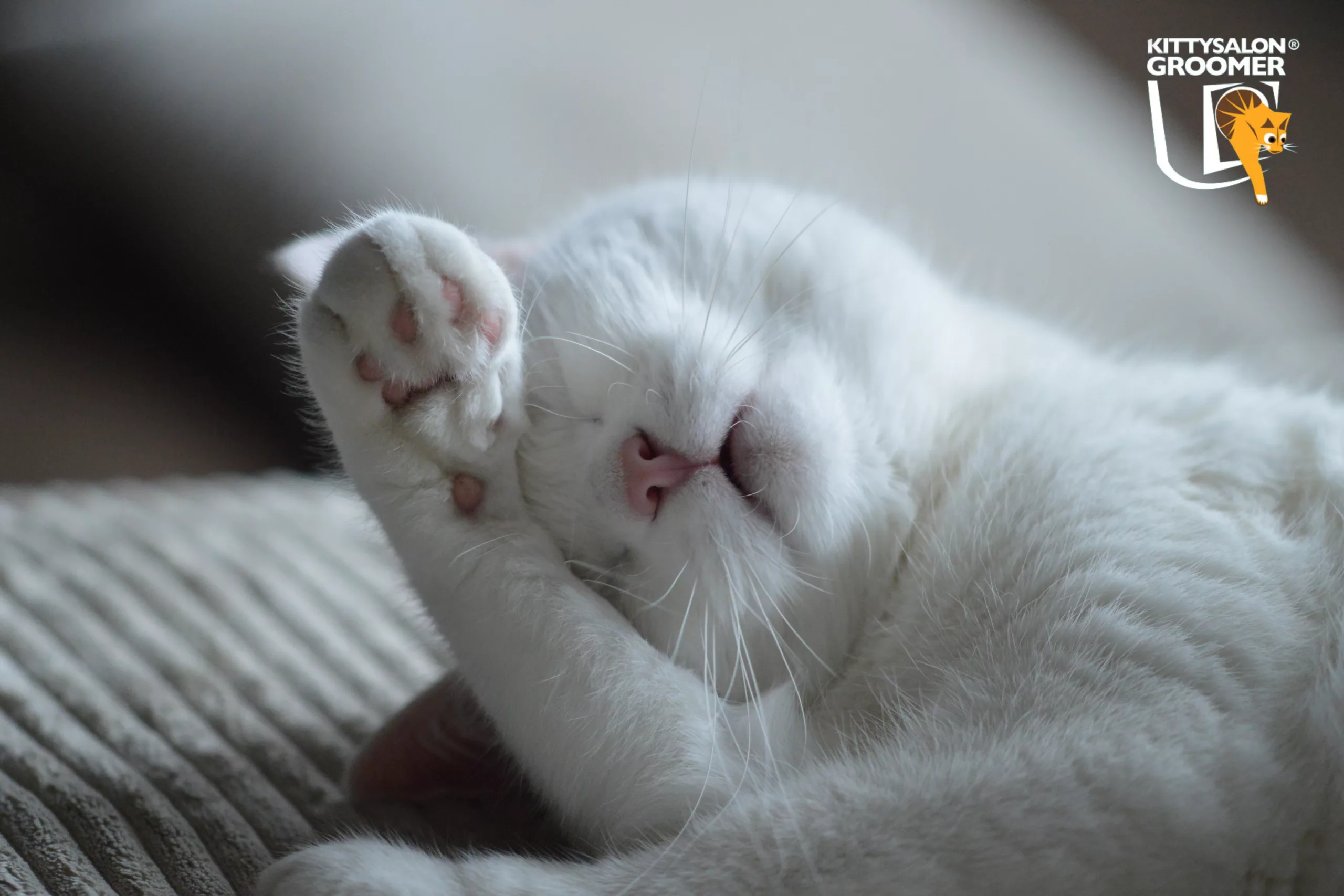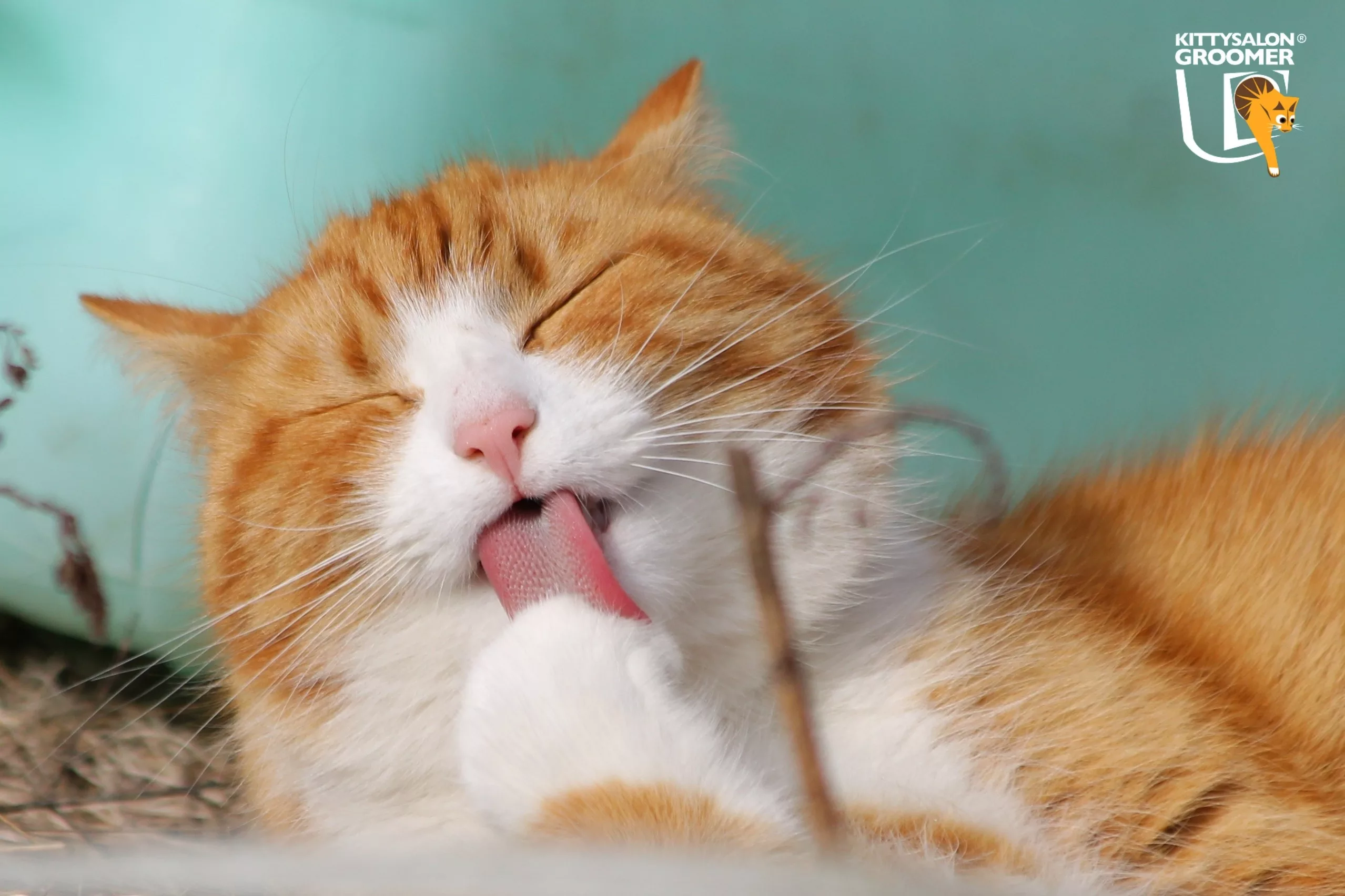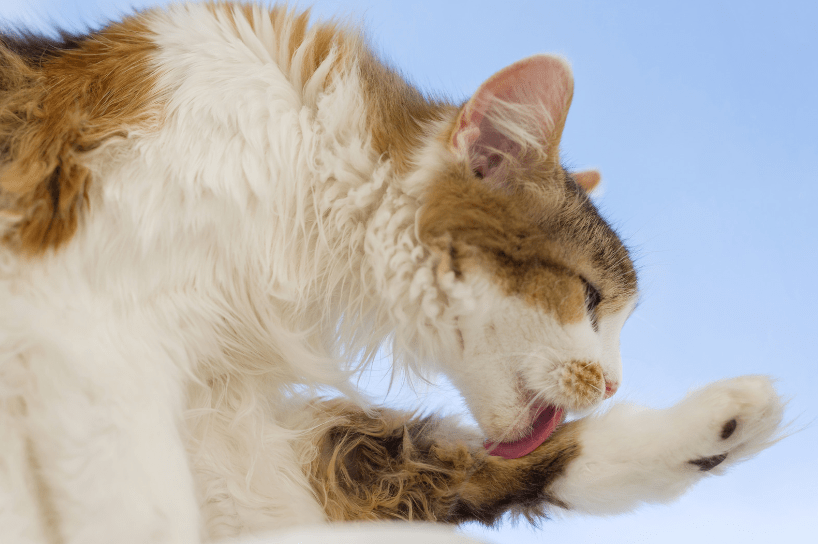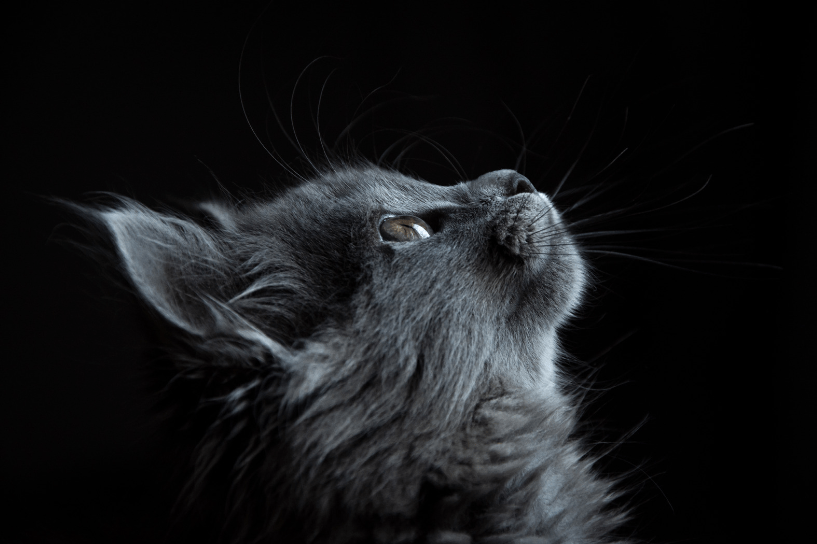Cats groom themselves to maintain cleanliness and regulate their body temperature. Self grooming also aids in the distribution of natural oils across their skin and fur.Cats are meticulous creatures with an instinctive drive to stay clean and hygienic. Through self-grooming or allogrooming, they remove loose hair, debris, and parasites, while simultaneously ensuring their coat remains smooth and less prone to matting. This grooming process serves multiple purposes, including the distribution of natural skin oils that enhance the fur’s sheen and provide a level of waterproofing.Moreover, grooming is a self-soothing behavior that helps cats manage stress and maintain social bonds when grooming one another. It is an essential aspect of feline behavior, reinforcing their natural predisposition for cleanliness and overall well-being. With such grooming rituals, cats not only maintain their physical health but also fortify their adaptability to different environments.

Introduction To Feline Grooming
Grooming is more than just a beauty ritual for cats. It’s a fundamental aspect of their daily routine and imperative for their health and well-being. A cat licking its fur may seem ordinary, but this act is deeply ingrained in feline behavior, serving multiple purposes from hygiene to stress relief. This section delves into the fascinating world of feline grooming to understand why cats are so dedicated to keeping themselves meticulously clean.
Understanding The Basics Of Cat Behavior
Cats are creatures of habit and their grooming rituals are no exception. The need to groom stems from instinctual behaviors passed down through generations. From the solitary big cats in the wild to our
domestic companions, all felines share this innate drive. Grooming maintains their coat’s health, regulates body temperature, stimulates blood flow, and even serves as a coping mechanism for stress or anxiety. Recognizing these behaviors offers insight into the complex psyche of our feline friends.
An Overview Of How Cats Groom Themselves
Cats take a methodical approach to grooming, using their
tongue, teeth, paws, and
saliva to maintain cleanliness. Their tongues are equipped with tiny, hook-like structures that act as a comb to remove loose fur and dirt. Meanwhile, their teeth help in detangling knots, paws are used for wiping, and saliva has enzymes that reduce odors and provide a form of antiseptic. This comprehensive routine ensures that a cat’s fur is not just clean but also plays a role in
health maintenance.
- Beginning with the face, cats use their dampened paws to wipe dirt and debris.
- They meticulously lick their fur from head to tail to ensure no spot is missed.
- Special attention is given to grooming after eating or when shedding to keep their coat in pristine condition.
Understanding the complexities behind the seemingly simple act of cat grooming itself reveals the elegance and efficiency of their survival strategies. Such behaviors highlight the
intelligence and adaptability of these beloved animals.
The Science Behind The Grooming
If you’ve ever watched a cat meticulously wash itself, you may have wondered what drives these creatures to be so self-conscious about their cleanliness. While it’s tempting to attribute their grooming habits to vanity, the truth lies in the complex science that governs their behavior. Grooming is not merely about staying clean; it’s a critical component of a cat’s health and social life. Let’s delve into the anatomical tools that cats possess for self-maintenance and uncover the scientific reasons behind their grooming rituals.
Anatomical Tools for Self-Grooming: Tongue, Teeth, and Paws
Anatomical Tools For Self-grooming: Tongue, Teeth, And Paws
Cats are equipped with specialized adaptations that make them self-sufficient groomers. Their grooming toolkit includes:
- Tongue: A cat’s tongue is covered with tiny, hook-like structures called papillae. These keratin-based spines give the tongue a rough texture, which is perfect for detangling fur and removing dirt.
- Teeth: Cats use their teeth to nibble away at tougher tangles and to remove external parasites like fleas.
- Paws: A cat’s paws are multifunctional tools. They dampen them with saliva and use them to wipe the face and ears, reaching spots that the tongue can’t.
The Role of Saliva in Feline Grooming
The Role Of Saliva In Feline Grooming
Saliva plays a multifaceted role in a cat’s grooming process:
- It acts as a cleaning agent, helping to wash away oils and contaminants from the fur.
- Cat saliva contains enzymes that can have antibacterial effects, keeping the skin underneath the fur healthy.
- As saliva evaporates, it also helps to regulate body temperature, providing a cooling effect on hot days.
Scent Marking and Grooming: Territorial Behaviors
Scent Marking And Grooming: Territorial Behaviors
Grooming transcends individual cleanliness, intertwining with a cat’s instinctual need to mark its territory. Scent glands located on various parts of their body, such as the cheeks, paws, and base of the tail, release pheromones that are unique to each cat. When grooming, cats can spread these pheromones across their coat:
- Grooming distributes personal scent markers across their body, reinforcing their territorial boundaries.
- By licking and then rubbing against objects or people, cats can establish their presence and comfort within their environment.
- This behavior plays an essential role in social interactions between cats, including establishing hierarchies.
Health And Hygiene Benefits
Cats are renowned for their meticulous grooming habits, which go far beyond mere vanity. Through consistent grooming, felines maintain a clean coat, minimize the presence of pests, and ensure their fur remains in tip-top shape. Their innate habit is a critical component of their overall well-being, attaching great importance to health and hygiene benefits.
The Connection Between Grooming And Health
It’s no secret that cats spend a significant amount of their day grooming. This ritual plays a pivotal role in their physical health. Licking their fur not only removes dirt but also spreads natural oils across their coat, aiding in skin hydration and fur health. The act of grooming is also a barometer of well-being, as a decline in grooming habits can often signal health issues. Grooming stimulates blood flow and helps to reduce stress, promoting a hearty, stress-free existence.
Fur Maintenance And The Prevention Of Matting
Regular grooming prevents the formation of mats—dense knots of fur that can cause pain and skin irritation. By continuously grooming, cats systematically detangle their fur, thus avoiding potential mats. This is particularly crucial for breeds with long hair, which are more prone to these troublesome tangles. Maintained fur also preserves insulation properties, essential for regulating a cat’s body temperature.
Parasite Control Through Meticulous Grooming
One of the healthiest outcomes of a cat’s grooming practice is its role in parasite control. Through their persistent cleaning, cats remove fleas, ticks, and other unwelcome guests that could otherwise set up residence in their coats. Grooming coupled with natural saliva enzymes acts as a deterrent to parasites, largely keeping them at bay and preventing infestations that can lead to more serious health concerns.
Moreover, the act of grooming allows felines to keep an eye on their health. They often reach areas we might overlook, enabling early detection of wounds, lumps, or tender spots that require attention.
In summary, a cat’s grooming is a testament to their evolutionary adaptation for optimum health and cleanliness. By embracing this natural behavior, domestic cats uphold a tradition that echoes their wild ancestors’ necessity for survival.
Grooming As A Stress Reliever
For our feline friends, grooming is more than just a way to stay clean; it’s an essential tool for
stress management. Cats are known to be creatures of habit, and grooming plays a pivotal role in their daily routine. In addition to removing dirt and untangling fur, the act of licking their coat has soothing effects that
reduce stress and promote a sense of well-being. In this section, we’ll delve into how grooming acts as a natural stress reliever for cats.
The Role Of Grooming In Reducing Feline Stress
Cares seem to melt away as a cat methodically washes its coat. The repetitive licking action in grooming triggers the release of
endorphins, the body’s natural
“feel-good” chemicals, which can provide pain relief and help decrease stress levels. This process is akin to meditation for humans, offering a peaceful retreat from any environmental stressors.
- Encourages a calming rhythm that eases tension.
- Improves circulation and helps distribute natural skin oils.
- Promotes a cooling effect through the evaporation of saliva.
- Helps cats to recover from trauma or a stressful event by providing a familiar routine.
Grooming As A Coping Mechanism For Anxiety
Grooming also serves as an
essential coping mechanism for cats facing anxiety. During stressful instances, such as loud noises or unfamiliar environments, cats often turn to grooming to bring comfort and re-establish control. This behavior helps them to distract themselves and manage the uncertainty of the situation.
- A sense of self-soothing is achieved through the methodical nature of grooming.
- Acts as a distraction mechanism, shifting focus away from anxiety-inducing stimuli.
- Maintains normalcy and routine in the face of stress.
Recognizing these signs of
grooming as a stress reliever can be crucial for owners to understand their cats’ needs and to provide additional comfort when necessary.
Social Aspects Of Grooming
Cats are known for their fastidious grooming habits, spending a significant part of their day licking and cleaning themselves. While this behavior is often associated with personal cleanliness, there’s another layer to it—the social aspects of grooming. Grooming serves as a way for cats to communicate with each other, establishing social bonds and hierarchies within a group. Whether it’s a mutual clean behind the ears or a gentle lick on the head, grooming rituals among cats are as much about social connections as they are about hygiene.
Allogrooming: Cats Grooming Each Other
Allogrooming, or social grooming, is an endearing behavior exhibited by cats who have formed a close bond. It’s not just about cleaning – it’s a demonstration of trust and companionship.
This ritual strengthens social bonds and creates a peaceful group dynamic.
- Facilitates social bonds among cats, a sign of trust and friendship
- Reinforces hierarchies within the group, often initiated by a dominant cat
Human Interaction And Grooming Bond
This unique form of interaction transcends the feline world and extends to their human counterparts. When a cat includes their human in these grooming rituals, whether by
rubbing their head against them or giving them a gentle nibble, it’s a clear sign of affection and trust. Here are some ways humans can engage:
- Brushing your cat regularly helps mimic the allogrooming process, further cementing your bond.
- Understanding a cat’s body language during grooming can help deepen the human-cat relationship, allowing for better communication.
Grooming And Communication
Exploring the world of felines, it’s evident that
grooming is more than just a cleanliness routine for cats; it’s a nuanced form of communication. When a cat licks its fur, it’s engaging in an activity that tells a multifaceted story, both to themselves and to other felines. Understanding
grooming behavior can offer insight into the complex social lives of cats, revealing the delicate hierarchy within their group dynamics. As we tune into their grooming rituals, we unveil a deeper understanding of their interpersonal relationships.
How Grooming Signals Different Messages To Other Cats
Cats are sophisticated creatures and their grooming habits are an integral part of
how they communicate with their peers.
- Marking Territory: Cats have scent glands on their body and when grooming, they distribute their scent to mark belongings and space as their own.
- Creating Bonds: When cats groom each other, a behavior known as allogrooming, they strengthen social bonds and show trust and affection.
- Signaling Health and Well-being: A well-groomed coat is a sign of health. Cats may groom conspicuously to demonstrate their physical state to others.
Dominance, Submission, And Social Standing
The act of grooming, particularly interactive grooming, often conveys clear messages about
where a cat stands within the social hierarchy of their group.
| Behavior |
Implied Social Message |
| Grooming Followed by a Nip |
Displays dominance or a corrective gesture |
| Being Groomed |
Can be a sign of submission or respect to a dominant cat |
| Initiation of Grooming |
Often an offering of friendship or a request for social inclusion |
The social dynamics of felines are intricate and grooming is a strategic tool that cats utilize to navigate and negotiate these dynamics.
Grooming patterns can highlight the leaders, the followers, and consequently, the flow of everyday interactions within a feline community.
Disorders And Excessive Grooming
While grooming is a normal and healthy part of feline behavior, certain situations may lead to disorders and excessive grooming practices. When grooming transcends its usual purpose and frequency, it could indicate underlying health concerns or stress-related issues. Recognizing this behavior early and understanding its potential causes play a crucial role in maintaining the well-being of our beloved pets.
Identifying Obsessive Grooming Behaviors
To determine whether a cat’s grooming habit has crossed into the realm of the obsessive, observe these signs:
- Hair loss or bald patches
- Skin irritation or open sores
- Repetitive licking on specific body areas
- Grooming until the skin is raw or bleeding
- Increased frequency and duration of grooming sessions
Medical And Psychological Causes Behind Over-grooming
Over-grooming can stem from a variety of sources, ranging from medical to psychological. Identifying the root cause is essential for correct treatment. Some common triggers include:
| Category |
Potential Causes |
| Medical |
- Allergies (food, environmental)
- Parasites (fleas, mites)
- Fungal infections
- Pain (arthritis, dental issues)
- Neurological disorders
|
| Psychological |
- Stress
- Anxiety
- Boredom
- Changes in environment or routine
- Attention-seeking behavior
|
It’s vital to consult a veterinarian when any abnormal grooming behavior is observed. A professional assessment will determine whether the cause is medical, psychological, or both, leading to an effective treatment plan to restore your cat’s health and happiness.
Life Stages And Grooming Habits
Just like humans, cats experience various life stages, and with them come changes in behavior, including the way they groom themselves. Grooming is an innate activity that cats pick up as kittens, perfect throughout their prime years, and may struggle with as they reach their senior phases. This fascinating transition, driven by both instinct and necessity, ensures cleanliness, and temperature regulation, and even plays a role in social bonding. Let’s delve into how these grooming habits evolve and adapt throughout a cat’s life.
The Evolution Of Grooming From Kittenhood To Senior Cats
Kittens start learning the ropes of grooming from their mothers at a very young age. This learned behavior is critical for survival, helping them to not only stay clean but also to understand social cues within the feline world. As kittens grow into adolescence, their grooming habits become more refined and frequent, often reflecting a cat’s flexibility and agility during its prime years.
- Observation and Mimicry: Kittens observe their mother and mimic grooming behaviors.
- Practice and Precision: Young cats practice until they perfect the art of grooming.
- Independence: As adult cats, they take complete charge of their grooming routine.
Entering adulthood, cats typically have a well-established routine,
showcasing mastery in self-care. The grooming process not only involves the coat but also includes nail care, ear cleaning, and dental hygiene. Adult cats spend a significant part of their day grooming themselves to maintain their sleek and healthy appearance.
Changes In Grooming Behaviors With Aging
As cats age, they can face physical limitations and health issues which may alter their grooming habits. Elderly felines might find it difficult to reach certain parts of their body or may struggle with the physical act of grooming due to
arthritic pain or decreased flexibility.
- Reduced Frequency: The frequency of grooming may decline with age.
- Spot Grooming: Senior cats might focus on easy-to-reach areas, potentially leading to neglected spots.
- Health Monitoring: Changes in grooming can be indicators of underlying health issues, warranting veterinary attention.
| Life Stage |
Grooming Habit |
| Kittenhood |
Learning and mimicking |
| Adulthood |
Maintaining routine care |
| Senior Years |
Adjusting to physical changes |
Grooming is an essential part of a cat’s life and their self-care routines adapt to their age and ability. From the playful licks of kittenhood to the mindful cleans of their later years,
each stage of grooming is a reflection of a cat’s journey through life. By understanding these changes, cat owners can provide the necessary support for their feline friends, no matter their age.
Caring For A Grooming-challenged Cat
Grooming is more than a beauty routine for our feline friends; it’s a critical aspect of their health and well-being. But, what about cats that struggle with grooming themselves due to age,
disability, or
medical conditions? As a caring pet owner, it’s essential to understand how you can assist your grooming-challenged cat in maintaining their coat and overall hygiene.
Assisting Cats With Disabilities Or Illness
Caring for a cat with grooming challenges requires patience and a gentle approach. Here’s how to help:
- Regular brushing: Reduces matting and helps distribute natural oils.
- Specially-designed tools: Brushes with softer bristles or grooming gloves might be necessary.
- Sensitive areas: Avoid sensitive spots that might cause discomfort or pain.
- Bathing assistance: Cats with disabilities may need help with occasional baths, using cat-friendly shampoo.
It is also vital to
monitor skin health and consult a veterinarian if any unusual signs appear.
Regular Grooming Assistance For Long-haired Breeds
Long-haired cats often need extra help to keep their luxurious coats untangled and clean. Consider these steps:
- Regular brushing sessions: Prevents mats and keeps the hair free of debris.
- Professional grooming: Sometimes it’s best to leave the job to professionals, especially for trimmings and thorough cleaning.
- Diet for coat health: Ensure your cat has a balanced diet to promote a healthy coat.
Establishing a
routine for grooming can also make the process easier for both the cat and the caretaker.
The Multifaceted Nature Of Cat Grooming
Cat grooming transcends mere cleanliness; it’s a complex behavior deeply ingrained in feline nature. This sophisticated ritual aids in temperature regulation, and scent communication, and even serves as a self-soothing mechanism that reflects their emotional state. Observing a cat’s grooming habits offers a window into their well-being, making it an essential aspect of their overall health.
Summarizing The Importance Of Grooming For Cats
Grooming is vital for cats for multiple reasons:
- Cleanliness and Hygiene: Regular grooming keeps a cat’s coat free from dirt and parasites.
- Health Monitoring: Grooming allows cats to catch early signs of skin issues or injuries.
- Thermoregulation: By licking their fur, cats cool themselves down and maintain an optimal body temperature.
- Stress Relief: Grooming is a self-soothing behavior that helps cats reduce their stress levels.
- Social Bonding: When cats groom each other, it strengthens their social bonds and provides comfort.
Encouraging Healthy Grooming Practices Among Pet Owners
Owners play a pivotal role in reinforcing
healthy grooming habits. Consider these tips to support your cat’s grooming routine:
- Provide a calm environment to help your cat groom without stress.
- Introduce the right grooming tools like brushes and combs suited for your cat’s coat type.
- Engage in regular brushing to reduce hairballs and improve coat health.
- Check regularly for signs of excessive grooming, which could indicate underlying health issues.
- Ensure your cat’s diet supports a healthy coat and skin.
Understanding and participating in your cat’s grooming can fortify their health and deepen the bond you share. Stay alert to changes in grooming frequency or style, and consult a veterinarian if concerns arise. Remember,
grooming is more than cleanliness—it is a multifaceted behavior that enriches your cat’s quality of life.
Conclusion
Cats are groomed for cleanliness, comfort, and communication. This instinctual behavior keeps them healthy and reflects their well-being. By understanding their grooming habits, we deepen our connection with our feline friends. Embrace their meticulous nature—it’s just one aspect of their mysterious charm.
Keep learning, keep loving, and keep watching your cat’s self-care routine.








